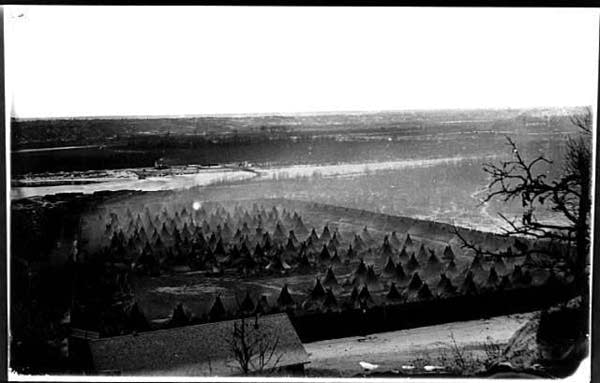Part 10: Payback for the Dakota - banishment
Go Deeper.
Create an account or log in to save stories.
Like this?
Thanks for liking this story! We have added it to a list of your favorite stories.

By John Biewen
Altogether in the six-week war, between 400 and 1,000 white people died -- most of them settlers. Not as many Dakota died -- maybe 50 to 100 in the war itself. But payback was still to come.
Minnesota Gov. Alexander Ramsey outlined the consequences to the Dakota in a speech to a special session of the Legislature on Sept. 9, 1862, shortly before the war ended.
Turn Up Your Support
MPR News helps you turn down the noise and build shared understanding. Turn up your support for this public resource and keep trusted journalism accessible to all.
Our course, then, is plain. The Sioux Indians of Minnesota must be exterminated or driven forever beyond the borders of the State. If any shall escape extinction, the wretched remnant must be driven beyond our borders, and our frontier garrisoned with a force sufficient to forever prevent their return.
It's not surprising that white Minnesotans were enraged by the attacks. But the anger turned extreme. A newspaper columnist named Jane Grey Swisshelm called for a bounty for Sioux scalps. Months later the state started offering $75, and eventually $200, for scalps.

Chief Little Crow and a few hundred of the most militant warriors had fled west, out of Minnesota. The rest of the Dakota people gathered voluntarily at a makeshift camp on the prairie to wait for Col. Henry Sibley. Most were women, children and old men who had not participated in the killings.
"There are letters back and forth between Henry Sibley and the leaders on the Dakota side, where he specifically said, 'Come out under a flag of truce. You'll be protected, I'll protect you. You have my word,'" said Gwen Westerman.
But like so many other promises that had been made along the way, that one was broken, too, she said.
The Dakota trusted Sibley when he told them that only those who had killed settlers would be punished. But instead, all 1,700 Dakota civilians were made to march 150 miles down the Minnesota River.
Along the way, white people attacked them with rocks, clubs, and knives. A half-Dakota man named Samuel Brown was along for the march, working for the government. He wrote in his diary that in the town of Henderson, a white woman grabbed a baby from a Dakota woman's arms and threw it to the ground, killing the child.
"They lost everything. ... These are people who were guilty of nothing."
The Dakota walked for a week until they reached their destination -- Fort Snelling near St. Paul.
It was "essentially a concentration camp," said historian Mary Wingerd, "where they were kept until the spring of 1863. And then they were transported to a reservation -- Crow Creek, South Dakota. It was in Dakota Territory, which was the next best thing to hell. And the death toll was just shocking."
Hundreds of Dakota, mostly children and old people, died of disease over that winter at Fort Snelling. In the spring, hundreds more died on the boats that took them down the Mississippi River and up the Missouri River to Dakota Territory. Still more hundreds died at the South Dakota reservation.
As Wingerd puts it, this was the thanks most of the Dakota got for opposing the war.
"They lost everything. They lost their lands. They lost all their annuities that were owed them from the treaties. These are people who were guilty of nothing," she said.
Part 11: The condemned end up in Mankato >>>
<<< Return to part 9 of Little War on the Prairie




